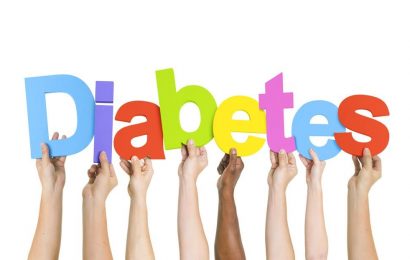Getting checked for diabetes
Anyone with symptoms of diabetes should see their health-care provider right away. Because type 1 diabetes runs in the family, relatives of people with type 1 diabetes can be screened to detect the risk of developing type 1 diabetes years before symptoms appear through a study called TrialNet.
Your healthcare provider should screen you for type 2 diabetes if you:
• are age 45 or older
• are between the ages of 19 and 44, are overweight or obese, and have one or more other diabetes risk factors
• are a woman who has had gestational diabetes
Children and teenagers can get type 2 diabetes, too. For this reason, your child’s health-care provider should screen for type 2 diabetes if your child:
• is overweight or obese
• had a low birthweight
• has a mother who had diabetes while pregnant with them
• has any other risk factors for type 2 diabetes
ABCs of diabetes
There’s a lot to know and do to manage your diabetes. Learning as much about your condition as possible and making sure you have support from your health-care team, family and friends will be helpful for you.
Knowing your diabetes ABCs will help you to manage your blood glucose, blood pressure and smoking. Keeping your “numbers” at goal can lower your risk of having a heart attack, stroke, and eye, kidney and nerve damage. Stopping smoking is also very important.
• A is for A1C. The goal for most people with diabetes is less than 7 percent. The A1C is usually measured every three to six months.
• B is for blood pressure. The goal for most people is a below 140/90 mmHg. Your goal may be lower if you are younger or if you have kidney disease.
• C is for cholesterol. Your provider will measure HDL (good) and LDL (bad) cholesterol. Ask your provider what your goals are. If you are over 40 years of age, you may need to take a medicine called a statin.
• S is for stopping smoking. Smoking raises your risk of heart disease, nerve damage, kidney disease, eye disease and amputation. Ask your provider for help to quit smoking, or visit https://smokefree.gov for more information on ways to quit.
Talk with your health-care provider or a certified diabetes educator about your “ABC” goals and how often you should have your numbers checked.





